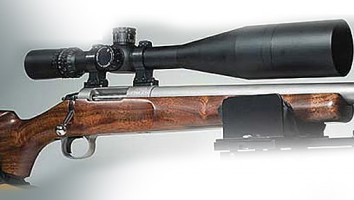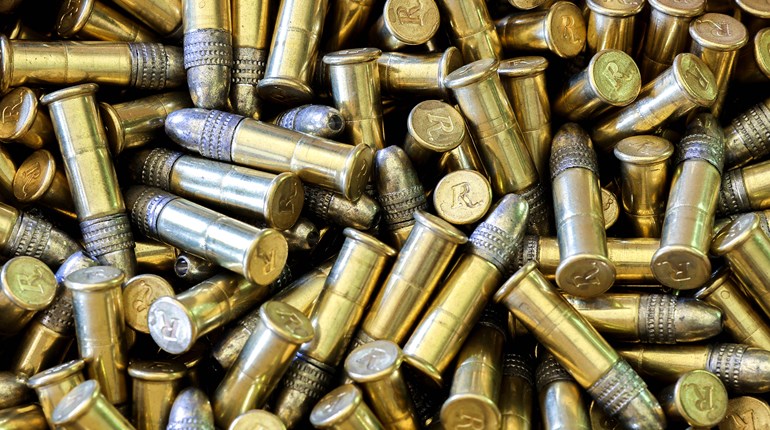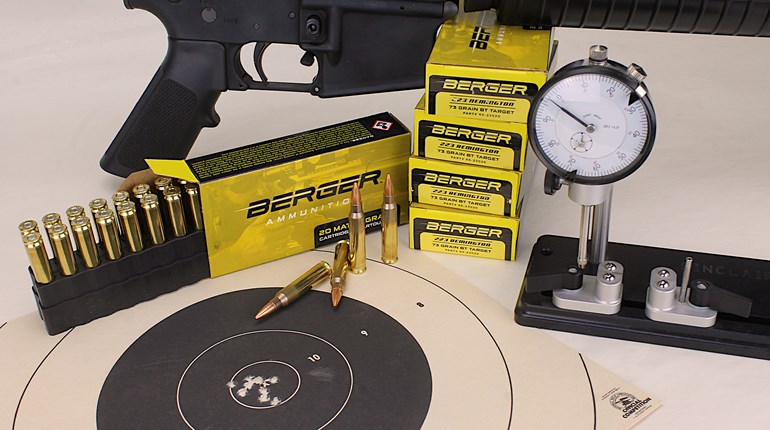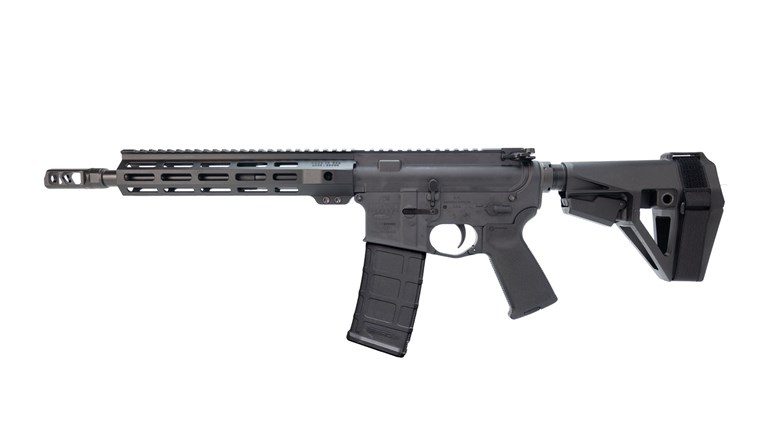
When I opened the box of this Dakota there were some pleasant surprises. The first was the caliber: .20 Tactical. I'd heard of it but paid it little mind up to this point. Referred to by its inventor Todd Kindler as the Tac 20, it was developed about 10 years ago by necking down a .223 Remington case and blowing out the shoulder from 23 to 30 degrees. Though its name conjures images of black rifles and snipers, the cartridge is really designed for long-range varmint shooting where accuracy and a lack of recoil and report are major considerations. Dakota, which is known for offering efficient and balanced wildcat designs in elegant packages, felt the .20 Tactical had enough merit to include it in its stable and licensed the chambering from Kindler.
The next surprise came when taking the rifle apart and found no recoil lug, or at least anything resembling a normal lug. Holding fast to its mantra of keeping its designs as simple and efficient as possible, Dakota's designers saw no need for a traditional recoil lug when the cartridges chambered in this rifle have so little rearward thrust. The action is a cooperative effort between Nesika and Dakota. It is a round, stainless steel single shot, but underneath where the magazine cutout would be if it were a repeater is a 1 1⁄8-inch-long flat, 1-inch wide and 1⁄4-inch deep with a 1⁄4-inch radius at its bottom. This flat mates with a corresponding bit of epoxy bedding compound in the stock and transfers the recoil impulse to the stock.
Screwed into this heavy-walled receiver is a 24-inch stainless steel barrel, 1 1⁄8 inches in diameter at the receiver. It maintains this dimension for about 2 1⁄2 inches then tapers to 1-1⁄16 inch at the muzzle, where it is capped with a recessed, 11-degree crown. The metal is finished in a velvety fine bead blast.
Dakota has long been synonymous with great wood, and this Predator is cloaked in a very nice piece of Claro walnut. It is a heavy-varmint configuration, with a thick, sloping Monte Carlo comb and no cheekpiece, and a wide, flat fore-end well suited to shooting from a rest. The barrel is completely free floating. My sample had no checkering, but Dakota's website says the Serious Predator has checkering on its grip. No matter, checkering on a varmint rifle is superfluous anyway. The whole assembly is held together with three stainless steel socket-head screws within aluminum pillars, two of which also attach the matching stainless steel trigger guard.
As one might expect, the trigger Dakota hangs on the Serious Predator is superb—nary a smidgen of movement beyond the break, it letoff at a very consistent 1 1⁄2 pounds. It is adjustable, but the threads to the adjusting screws are sealed with a thread-locking compound. Who needs to adjust a 1 1⁄2-pounder anyway?
Everyone here who saw the Serious Predator wanted to shoot it, and our relatively new armorer, Dave Gledhill, was kind enough to do the chronograph chores—it didn't require much cajoling. Ten rounds of the H.S. Munitions ammo supplied with the gun clocked an average of 3,804 feet per second.
The best surprise was yet to come, however. A Nightforce NXS 8-32x56 mm scope was attached to this rig, and I headed to Field Editor Richard Mann's hunting cabin. Often it takes a few groups to settle into a rifle before really seeing how well it shoots—not with this sweetheart. From the get-go this rifle simply chewed a single hole in the 100-yard target. The largest was 7⁄16 inch; smallest was awfully close to 1⁄4 inch—so close you'd need an optical comparator to measure the few thousandths more than a quarter.
Richard and I were really impressed with it, and we shot a lot more than the required five, five-shot groups. This rifle is just plain fun to shoot. Recoil is nil; actually it calculates out to 1.6 foot-pounds. No wonder there isn't a big lug hanging off the bottom of the receiver.
After a while we got a little bored shooting a single hole in paper and—in purely scientific interest—decided to clean out the refrigerator of some several-month-old, cheap soda pop. Give a couple of rednecks a gun, some ammo and some stale food, and watch the fun begin! I tried valiantly to capture the spectacular subdivision of old soda bottles by a 33-grain V-MAX at 3,804 feet per second with a camera, but, alas, all of the images showed nothing but a sort of an orange or blue rain, depending on the flavor of the pop.
Of course, we had to shoot the .20 Tactical in the Bullet Test Tube. Since inventing the bullet catcher last year, Richard has become a fanatical collector of spent projectiles of all sizes at a variety of impact velocities. As expected in this case, his collection grew by only a few tiny fragments of lead and copper. The flyweight V-MAX bullet is designed to disintegrate at any reasonable impact velocity, and that's exactly what happened. To feed the.20 Tactical you'll need to handload or contact a custom loader like H.S. Munitions; however, by the time you read this Dakota will have it available with properly headstamped brass from Lapua.
Dakota's Serious Predator is aptly named. It is a well designed and exquisitely executed example of the gunmaker's art, and maintains the company's reputation for building accurate, beautiful and efficient rifles. Prairie dogs, ground squirrels and woodchucks would not want to see one of these move into their neighborhood.




































